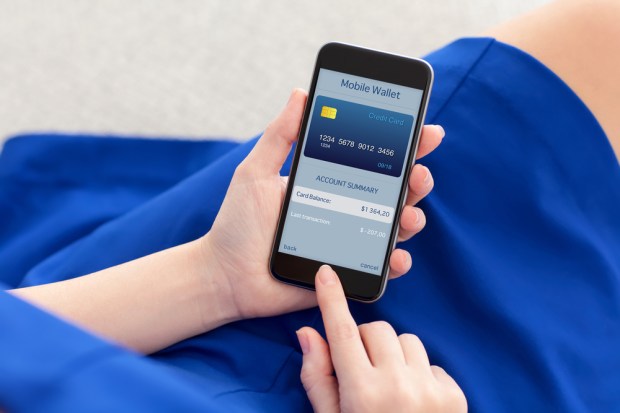Mobile Payments And The Blurry Lines Of Commerce

Mention “mobile payments,” and many people might immediately answer that they 1) pay with smartphones or other devices but 2) spend much more time bellying up to the register and paying with physical cards or cash.
Therein lies a conundrum. The promise of mobile has yet to meet reality, and many retailers find that the lines between channels (hence the term “omnichannel”) are increasingly becoming blurred. What has, in the past, been promised to be a payments revolution is much more … evolution, according to Gijs Op de Weegh, COO at Payvision and Acapture.
Payvision recently released its Mobile Payments Report 2016, which chronicles the evolution of mobile and the challenges that remain. And in an interview with PYMNTS’ Karen Webster, Op de Weegh said that mobile payments “was one of the topics that people talked about quite long ago, and it never really happened.”
Now, he added, mobile is slowly being adopted as technology is improving along different fronts, including authentication, and even along regional divides.
And, he said, adoption is gaining traction in the United States, with technology, such as NFC, and with security measures, such as EMV.
“You will always see this in payments,” he said, that “things wind up slowly going in the right direction.… It’s a combination of adoption, regulation, security.”
Payvision’s own report noted that lesser-developed markets (such as those belonging to what is colloquially known as BRIC nations and other countries, such as Kenya and Turkey, to name just two) have been more willing to adopt mobile payments than more advanced brethren.
Globally speaking, the research put forth by Payvision shows that a third of the world’s population use smartphones, yet only 6 percent have made the leap into using mobile payments.
One added tailwind: millennials, said Op de Weegh. Those users prefer mobile over desktop settings. “To buy something or to look something up,” he said, “it’s all really mobile-focused.” And for buying goods and services, he said, mobile proves easier as a process, as it is also flexible, along with increased competing power contained in those devices.
In addition to age demographics, noted Webster, income also plays a part in mobile adoption. In many cases, she noted, users do not have the money for traditional computer hardware and so turn to mobile devices for the technology and access that they need in order to transact and interact with others online. “This is part of the evolution,” said Op de Weegh, connecting people around the globe “who had never been connected to the internet before.”
Among the other points of the Payvision study: There is not necessarily a single device or single channel that takes precedence over others. Consider the transaction in which a buyer uses a mobile phone to browse or compare prices but goes into a mobile store to complete a physical transaction.
The blurring of those lines along the consumer continuum has implications for payments firms, agreed Webster and Op de Weegh. “People will never use only one device or only one channel to do their payments,” said the executive.
In fact, he said, 92 percent of transactions are done in an offline environment. By default, then, the remainder is done by mobile channels. Consumers just expect a seamless, convenient and user-friendly shopping experience whether it’s in a store, online or leveraging both channels. Payvision truly understands and utilizes information, taking the advantage in the increasingly competitive omnichannel payments arena.
In an interconnected environment, he said, with data crossing devices (and the internet itself, of course), it is crucial that retailers and resellers utilize that data efficiently and effectively. In an optimal scenario, said Op de Weegh, data can help pinpoint what a consumer needs, where and when, before he or she may even realize those desires, and this sets the stage for successful loyalty programs. Along the way, he noted, conversion — from mere browsing to active buying — also improves.
Company Description
One year ago, Payvision, one of the fastest-growing global acquiring networks in the world, launched its subsidiary company, Acapture — a new, scalable, data-driven PSP. The group now combines the experience of an industry leader and the flexibility and speed of a startup, supplying everything a merchant needs to grow their business and giving access to a full suite of omnichannel solutions. With in-depth knowledge within the acquiring space and empowered by data science and analytics, Payvision Group has transformed itself into a data-driven omnichannel enterprise and promises better authorization rates, improved security and increased revenues for merchants.
